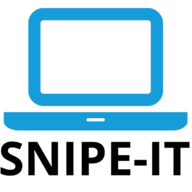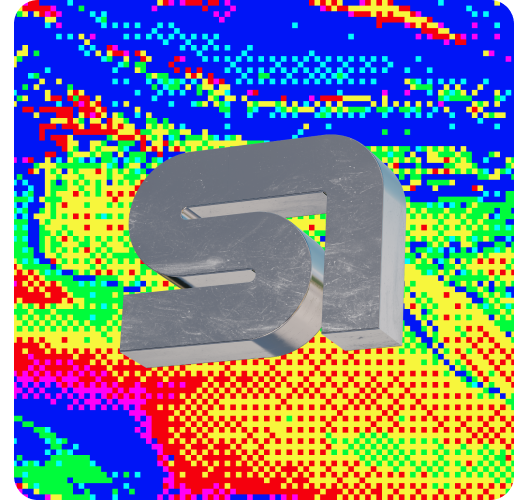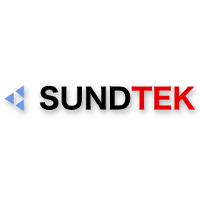
Snapcrescent
Snapcrescent - Self-hosted photo and video backup solution
Browse our large and growing catalog of applications to run in your Unraid server.

Snapcrescent - Self-hosted photo and video backup solution

Network Services• Management, Productivity, Tools / Utilities• Utilities
Snipe-it(https://github.com/snipe/snipe-it) makes asset management easy. It was built by people solving real-world IT and asset management problems, and a solid UX has always been a top priority. Straightforward design and bulk actions mean getting things done faster.
Snippet Box is a simple self-hosted app for organizing your code snippets. It allows you to easily create, edit, browse and manage your snippets in various languages.
Backup, Cloud, Other, Productivity, Tools / Utilities• Utilities
The mighty, self-hostable Git server for the command line
Backup, Cloud, Other, Productivity, Tools / Utilities• Utilities
SOSSE (Selenium Open Source Search Engine) is a web archiving software, crawler, and search engine
Backup, Cloud, Network Services• Web, Productivity, Tools / Utilities• Utilities
Sourcegraph docker image.
Home Automation, Other, Productivity, Tools / Utilities• Utilities, AI
A fast and local speech-to-text system that is personalized with your Home Assistant device and area names.

Keep track of your inventory of 3D-printer filament spools. Spoolman is a web service that helps you keep track of your filament spools and how they are being used. It acts as a database, where other printer software such as Octoprint and Moonraker can interact with to have a centralized place for spool information. For example, if used together with Moonraker, your spool weight will automatically be reduced as your print is progressing. For more container variables visit the official github repo https://github.com/Donkie/Spoolman#using-docker

Network Services• Management, Productivity, Tools / Utilities• Utilities
It's MS SQL Server... on Linux... who would have thunk it?!? Uses Official images for Microsoft SQL Server based on Ubuntu @ https://hub.docker.com/_/microsoft-mssql-server/ Database Storage Path: SQL Server data storage, defaults to cache drives for best performance. TCP Access Port - SQL Server TCP port, defaults to 1433. Accept End-User License Agreement - End-user License Agreement, REQUIRED. Sysadmin Password - SQL Server Sysadmin (sa) password, defaults to ChangeMe! if not changed.

Network Services• Management, Productivity, Tools / Utilities• Utilities
It's MS SQL Server... on Linux... who would have thunk it?!? Uses Official images for Microsoft SQL Server based on Ubuntu @ https://hub.docker.com/_/microsoft-mssql-server/ Database Storage Path: SQL Server data storage, defaults to cache drives for best performance. TCP Access Port - SQL Server TCP port, defaults to 1433. Accept End-User License Agreement - End-user License Agreement, REQUIRED. Sysadmin Password - SQL Server Sysadmin (sa) password, defaults to ChangeMe! if not changed.

Network Services• Management, Productivity, Tools / Utilities• Utilities
It's MS SQL Server... on Linux... who would have thunk it?!? Uses Official images for Microsoft SQL Server based on Ubuntu @ https://hub.docker.com/_/microsoft-mssql-server/ Database Storage Path: SQL Server data storage, defaults to cache drives for best performance. TCP Access Port - SQL Server TCP port, defaults to 1433. Accept End-User License Agreement - End-user License Agreement, REQUIRED. Sysadmin Password - SQL Server Sysadmin (sa) password, defaults to ChangeMe! if not changed.
StackEdit’s Markdown syntax highlighting is unique. The refined text formatting of the editor helps you visualize the final rendering of your files.

Web-based energy monitor. Slightly modified version of the official EmonCMS docker, for use on Unraid.
A safe and private place for your life's work. Standard Notes is a simple and private notes app available on most platforms, including Web, Mac, Windows, Linux, iOS, and Android. Before you start, make sure to copy the sample.env.sample (https://github.com/standardnotes/app/blob/main/.env.sample) to your standardnotes-web appdata directory and configure it with your parameters. Update the container ExtraParams accordingly.

A nice looking homepage for Docker containers or any services and links. Create a config.json file in the app data location, then copy and paste the following from https://github.com/notclickable-jordan/starbase-80/blob/main/config.json.sample Modify per your requirements

Network Services• Management, Other, Productivity, Tools / Utilities• Utilities
Provide access scoped API keys and stop letting every 3rd party app and script have full access to your starr instance(s)!

Cloud, Other, Productivity, Tools / Utilities• Utilities, AI
The open-source browser API built for AI agents. Steel provides a REST API to control headless browsers with session management, proxy support, and anti-detection features. Perfect for web automation, scraping, and building AI agents that can interact with the web.
Media Applications• Books, Other, Productivity, Tools / Utilities• Utilities
Stirling PDF (S-PDF) SPDF is a locally hosted web application that allows you to perform various operations on PDF files, such as merging, splitting and converting PDFs and more advanced features like OCR and compression Additional unraid docker settings in advanced section if required The majority of variable settings override any settings in /configs/settings.yml You can edit setting there instead of using docker variables if you want (You would need to remove them from docker to avoid override)

An inventory system that is hopefully simple enough for everyone! For setup, run a CouchDB instance and configure with the following: Set the user and password environment variables. Go to http://$serverurl:$port/_utils/#_config/nonode@nohost/cors and enable CORS for your domain. Go to http://$serverurl:$port/_utils/#_config/nonode@nohost and in the httpd section, set WWW-Authenticate to administrator Go to http://$serverurl:$port/_utils/#_config/nonode@nohost and set in the chttpd section require_valid_user to true Then create a database at http://$serverurl:$port/_utils/ Finally log in to storedown with the username, password, url, port, and database.

Media Applications• Video, Media Servers• Video, Other, Productivity, Tools / Utilities• Utilities
A Web-IPTV Player docker image.
Media Applications• Video, Media Servers• Video, Other, Productivity, Tools / Utilities• Utilities
It is a media library. It supports channels, playlists and videos. The primary goal of this application is to provide complete functionality of a media library, while being as lightweight as possible.
Media Applications• Video, Media Servers• Video, Other, Productivity, Tools / Utilities• Utilities
It is a media library. It supports channels, playlists and videos. The primary goal of this application is to provide complete functionality of a media library, while being as lightweight as possible.

A simplistic open-source subscription cost tracker
An SVN server instance. This container may require some manual intervention in the console and/or appdata repository files regarding authentication, follow the instructions from: https://medium.com/@elle.florio/the-svn-dockerization-84032e11d88d#.bafh3otmh
Generate subtitles, chapters, and summaries of videos in seconds with the help of OpenAI. Keep in mind, that the OpenAI API is not free!

This Plugin will install the Sundtek DVB Drivers to Unraid. Please visit the Plugin page after installing the plugin to configure your TVHeadend instance for use with this plugin.
Cloud, Game Servers, Other, Productivity, Tools / Utilities• Utilities
A self-hosted game stream host for Moonlight. You can connect to Sunshine from any Moonlight client on a variety of devices. See documentation for further configuration: https://docs.lizardbyte.dev/projects/sunshine/en/latest/about/docker.html

Organize your daily tasks in one place while making time tracking a lot less annoying. Super Productivity is a ToDo List / Time Tracker / Personal Jira Task Manager for Linux, MacOS and Windows aimed at reducing the time you spend with repetitive tasks and to provide you with a place to collect all the information you need to do your job. Apps available for Appstore and Playstore

Enjoy Superslicer directly in your browser with this easy to use Docker container. This template has the minimum variables defined, but you can find additional details on the template at the URLs listed below. https://github.com/helfrichmichael/superslicer-novnc https://hub.docker.com/r/mikeah/superslicer-novnc
Cloud, Media Applications• Music, Video, Media Servers• Music, Video, Other, Productivity, Tools / Utilities• Utilities
Superstreamer is here to make video delivery simple. Imagine having everything you need in one platform — starting with your raw video, Superstreamer helps you transcode it, package it into HLS playlists, and upload it to S3 with ease. You can even create custom playlists for each viewer, adding bumpers, ads, or filters on the fly.